Today, as promised, we decided to visit the what remains of the Stewart homestead, one of the Harbour Cone Reserve’s best preserved early settler ruins.
 We parked on Highcliff Rd where the public walking track crosses the road and headed down the rough steep slope. The Stewarts certainly had a beautiful little valley, with emerald green grass dotted by little yellow flowers and a view all the way out to Hoopers Inlet.
We parked on Highcliff Rd where the public walking track crosses the road and headed down the rough steep slope. The Stewarts certainly had a beautiful little valley, with emerald green grass dotted by little yellow flowers and a view all the way out to Hoopers Inlet.
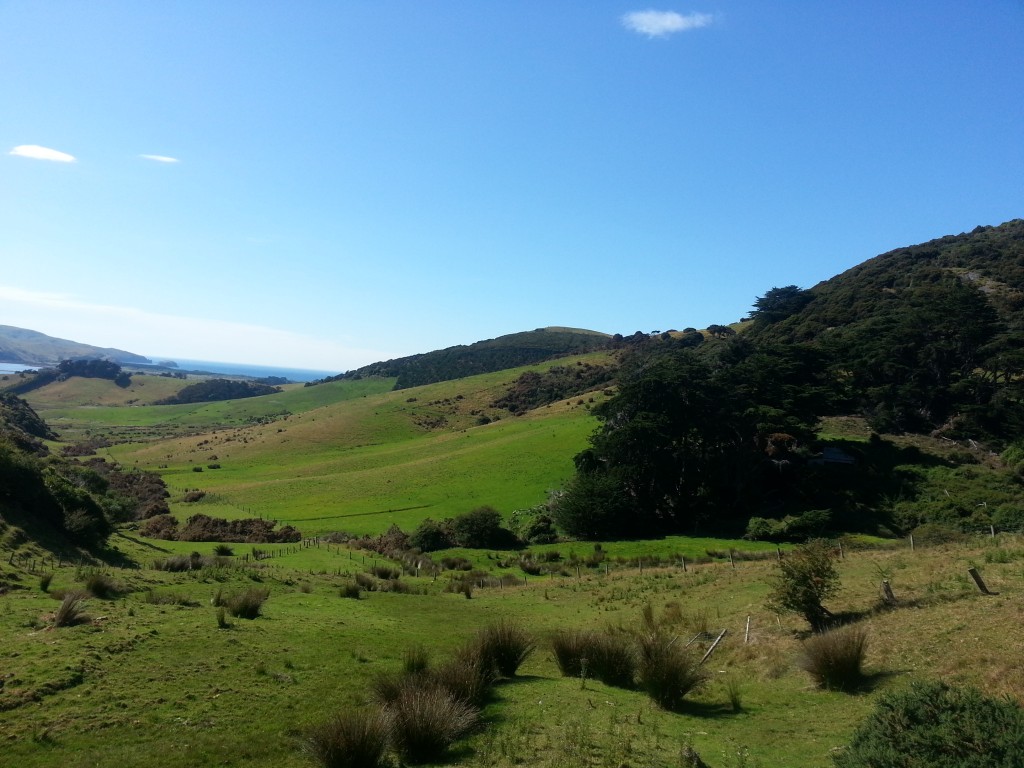
Once we got down to the valley floor it was a quick traverse over a boggy patch before we arrived at Stewarts Creek. There is a concrete ford over the creek under the trees so we were able to cross easily.
Then we headed into the macrocarpa grove to the homestead.
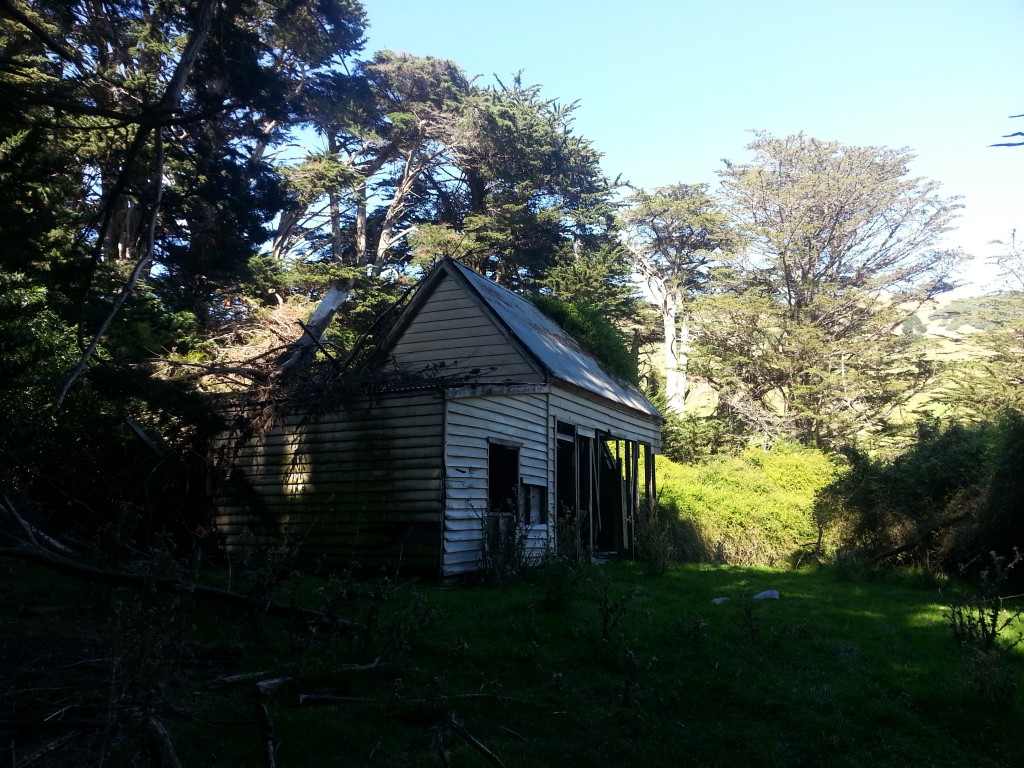
The house seems quite intact apart from the missing wall. Stepping inside there are old scraps of wallpaper to be seen and even a coal range made by H.E. Shacklock, an early Dunedin iron moulder and manufacturer who died tragically of suicide in 1902.
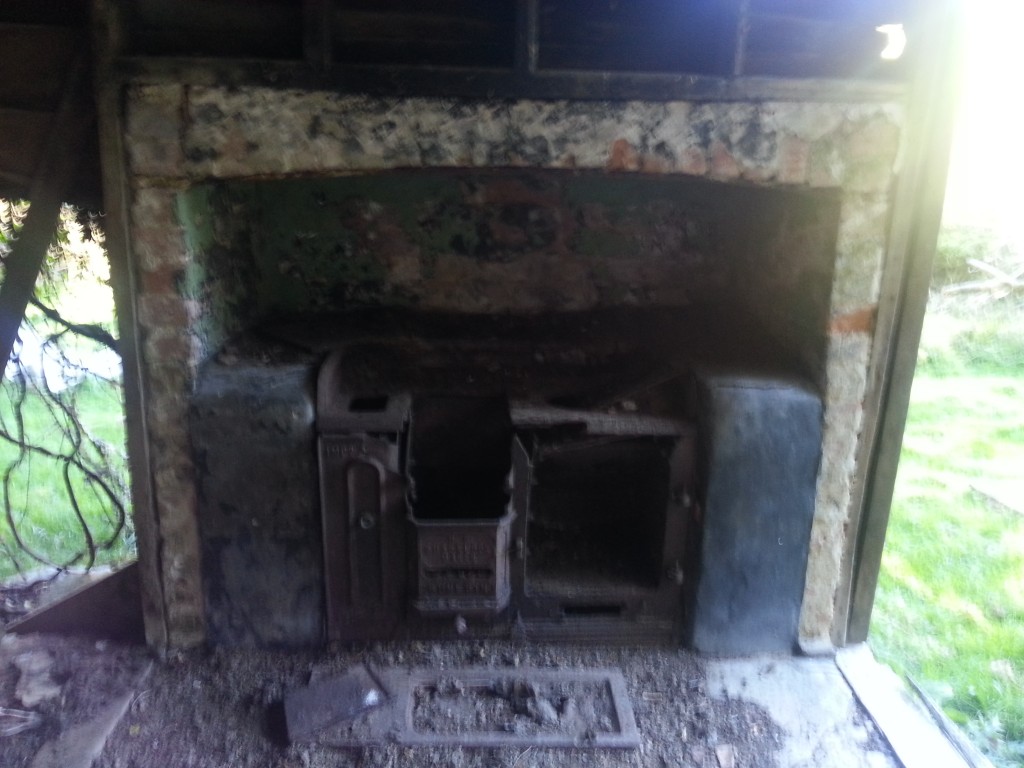
On the other side of the house there is a mysterious pile of bricks, as if something was once built there.

And now it’s time to do what I love best – find out who lived here! Luckily some descendants of the Stewart family still live in Dunedin and one, Julie Stewart, kindly agreed to help me.
Robert Stewart was a Scottish immigrant to Dunedin. He married Marion Patrick, also from Scotland, in 1869. They settled on this land, calling it Glenmore. It was here that they would raise thirteen children.
Robert attended the meeting in Walter Ridell’s house in 1870 regarding the establishment of the Sandymount School, and was one of five men elected to the first committee, which he served on for some time.
His children all attended the school, and since there’s so many of them I’ll give you the details on only a select few.
Robert Alexander Stewart, born in 1876, was working in a flaxmill at Sandymount in 1905 (perhaps the mill owned by the Robertsons of Seal Point). His partner at scutching the flax was caught in the machinery and his entire arm mangled. The arm was amputated at the shoulder but sadly the man still died of his horrific injury.
When drafted by ballot to fight in the First World War at 41 years of age, he was a healthy single man of 5 foot 5 inches, with blue eyes and brown hair. He was at the time working as a water ranger for the Rakia plains water supply and living in Chertsey, Ashburton.
His sister Marion (Minnie) Stewart, born in 1877, married a Green Island bricklayer by the name of John Stewart Lawson Morland when she was about 22. The marriage went downhill however and in 1911 a notice appeared in the Otago Daily Times detailing Marion’s accusation that her husband had deserted her for the past five years. He was urged to come forward or the marriage would be dissolved and Marion would be awarded custody of their children.
Her younger sister Christina Catherine Stewart would have been happier in 1908 when she celebrated her own wedding at Glenmore. She married William Noble Dumas McBryde of Outram wearing “white satin…the orthodox veil and orange blossom”. Her little sisters Annie and Maud attended as bridesmaids and “looked charming in cream voile”. The wedding was followed by a dance in the Sandymount Hall, then the happy couple departed for a honeymoon up north, having received gifts “both costly and numerous”.
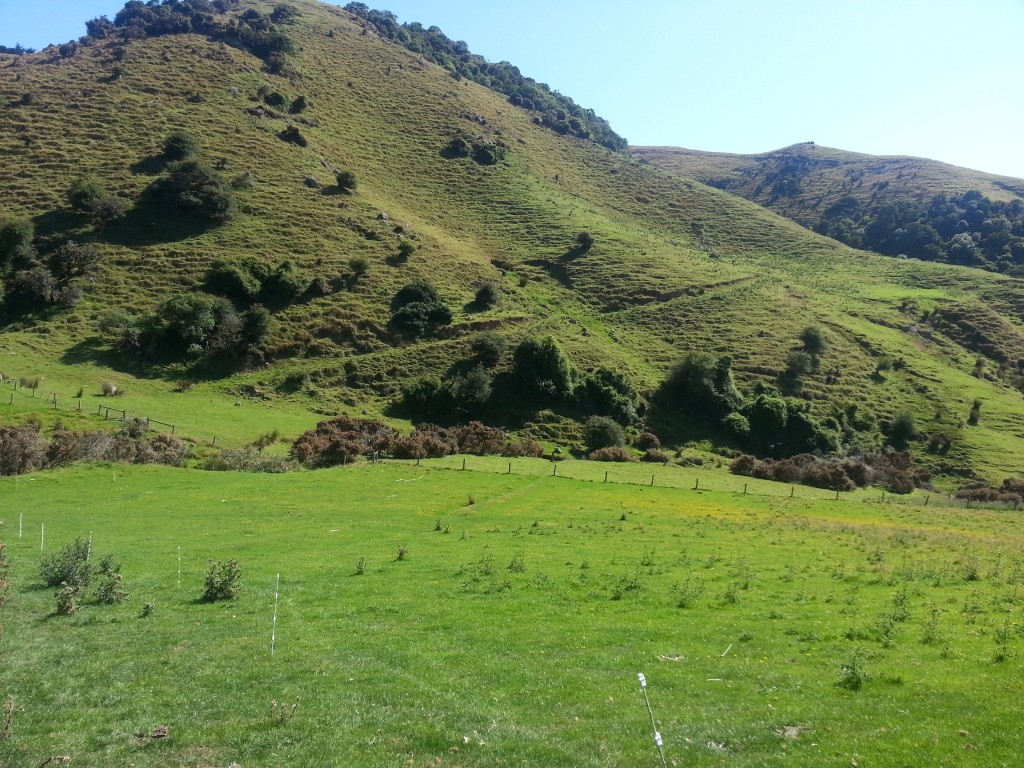
Alas their joy would last only six years, as Christina’s husband would pass away in Dunedin hospital in 1914 at the young age of 38.
William Donald Stewart, born in 1883, took over the Glenmore farm when his pioneering father died in 1913 at the age of 77. He married Jessie Anderson Morton of Waitepeka in 1915, and in July 1917 he appeared before the military service board asking to be spared from conscription into the war. He argued the need to stay to care for the farm, which was carrying 27 head of dairy cattle at the time, and to look after his wife and elderly mother. The case was adjourned until August, when William was advised that the farm should be carried on as a grazing farm and he should “prepare to go into camp” at the end of another three month adjournment. But in November, the board heard William argue against this solution. He now had an infant child at home, and two of his brothers were already serving, both wounded in hospital (New Zealand had a more than 80% casualty rate – casualties being soldiers either wounded or killed – in the First World War). The case was adjourned again, and it seems the lucky William escaped conscription after all.
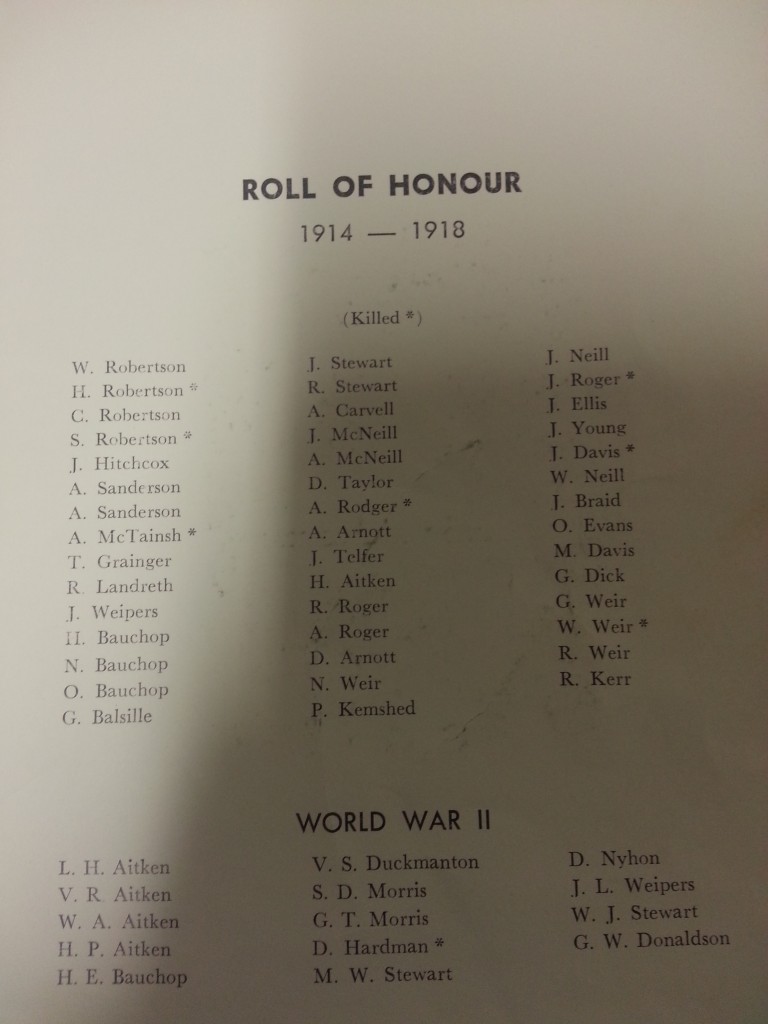
Wiliam and Jessie Stewart were not quite so quick to multiply as the previous generation, raising only three children in this house.
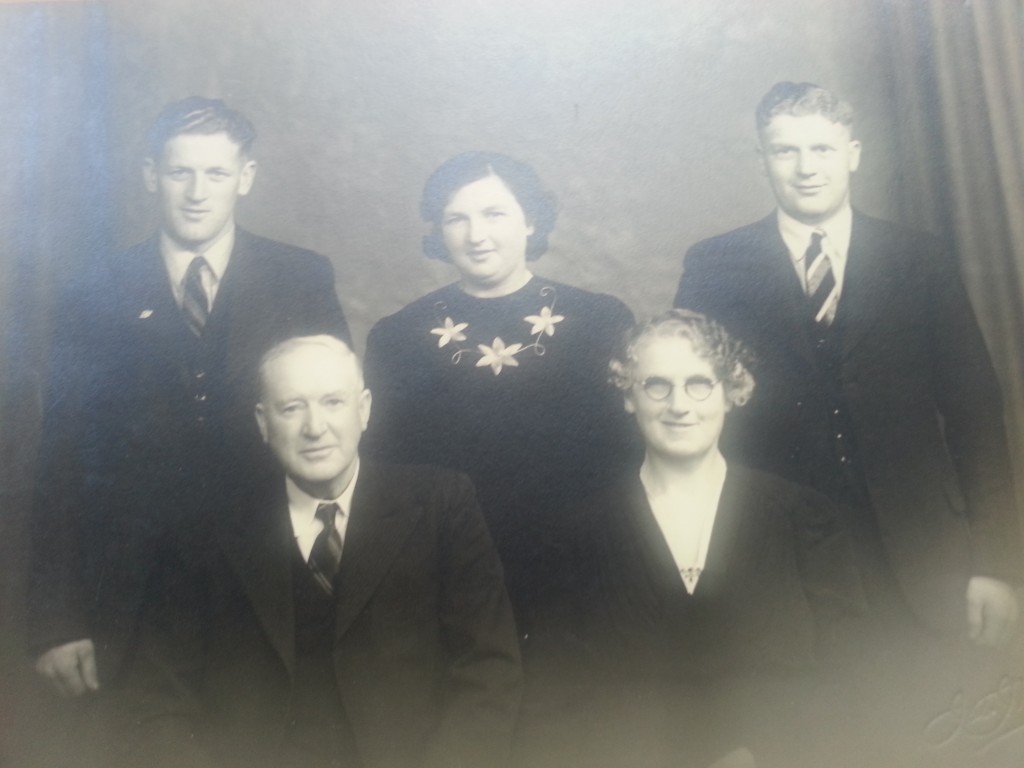
William Morton served in the Second World War, but sadly passed away only a few years after it ended.
Ron married Doreen Harwood (of another venerable Peninsula family) in 1946 and they rented the house next to the Sandymount School (owned by James – or Jimmy – Weiper) for eight or nine years. During that time Ron was a shepherd for the Burnside Freezing Works and also a contract shearer. Three of their four children were born while living there.
Despite this, to the family, the original Stewart block would always be known as “down home”.
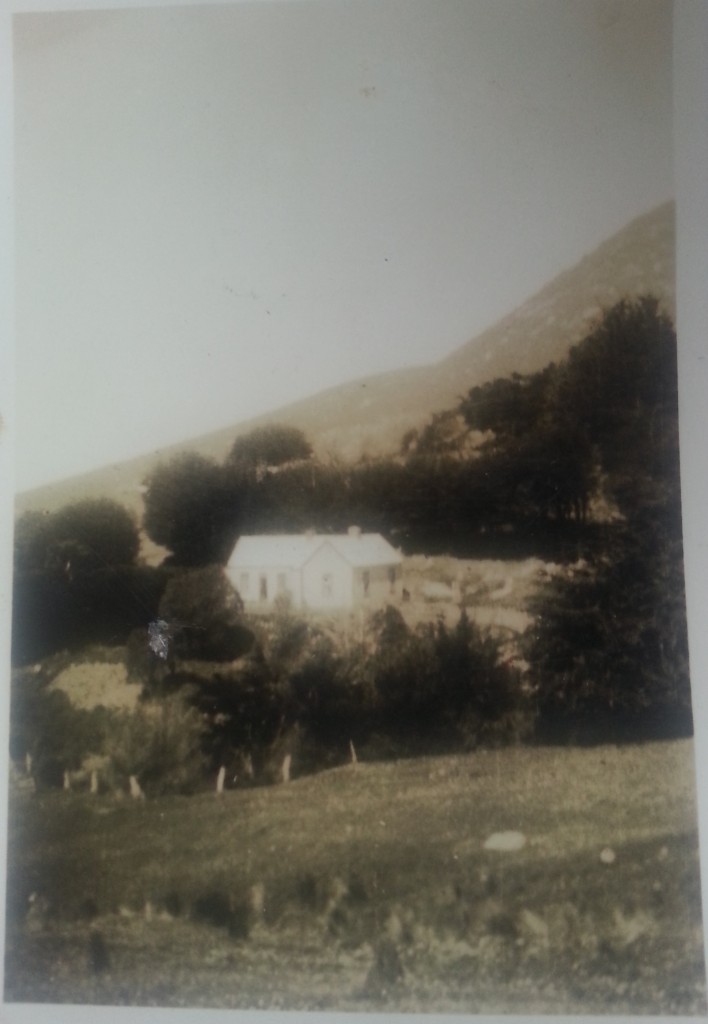
Down Home was last occupied about 1950. William and Jessie built a house in Portobello and retired there until William passed away in 1957. Afterwards, Jessie sold the Portobello house and moved into the city.
Land on the Peninsula was being consolidated and converted to sheep farming, and this farm was no exception. In 1954 Ron purchased an adjoining farm from Sandy Roger and the family moved over there, where their fourth child was born. And in 1956 ownership of the Down Home farm also passed to him. Ron and Doreen farmed both blocks and later on acquired another adjoining property through Doreen’s family.
Ron was a sheep farmer, and used the paddock around his parents’ old house for producing hay. It was for this reason that the front wall of the house was torn off, and the home that had raised fifteen Stewart children became a hay shed.
Loyal to the very end, Ron intended to send his children to the Sandymount School his grandfather had helped start. But he only had time to start his eldest son there before it was closed and after that all four children had to be sent to school in Portobello.
Ron eventually sold his farms to Akapatiki A Block and retired to Dunedin City with his wife Doreen. From there, the old Stewart farm eventually came into the hands of the DCC and became part of the reserve we can enjoy today.

Exploring the slope behind the house, I found a few more interesting things. The first is what appears to be a group of old burned tree stumps. The early settlers often did clear the land by burning, and I wonder if the evidence could have survived this long?
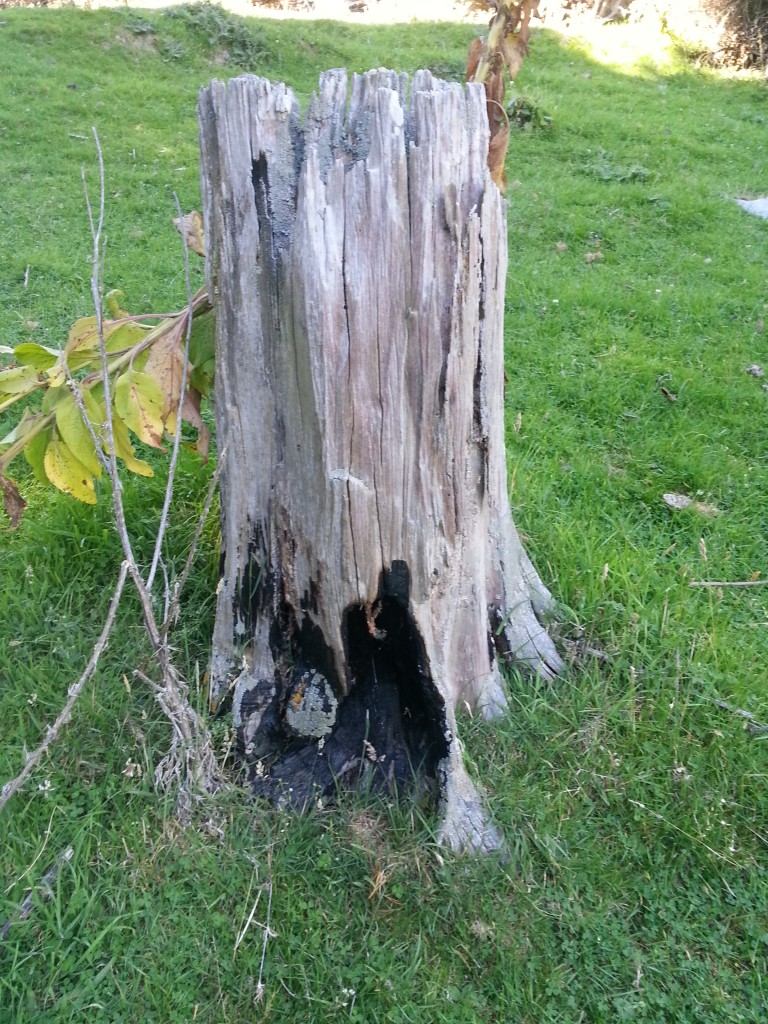
Further up the slope there is a concrete structure with the rusted remains of a machine. This is what remains of an Anderson Oil Engine, used often by settlers in the period between the wars for such purposes as milking, pumping, milling or grinding. This one was likely used for milking, back when this was still a dairy farm.
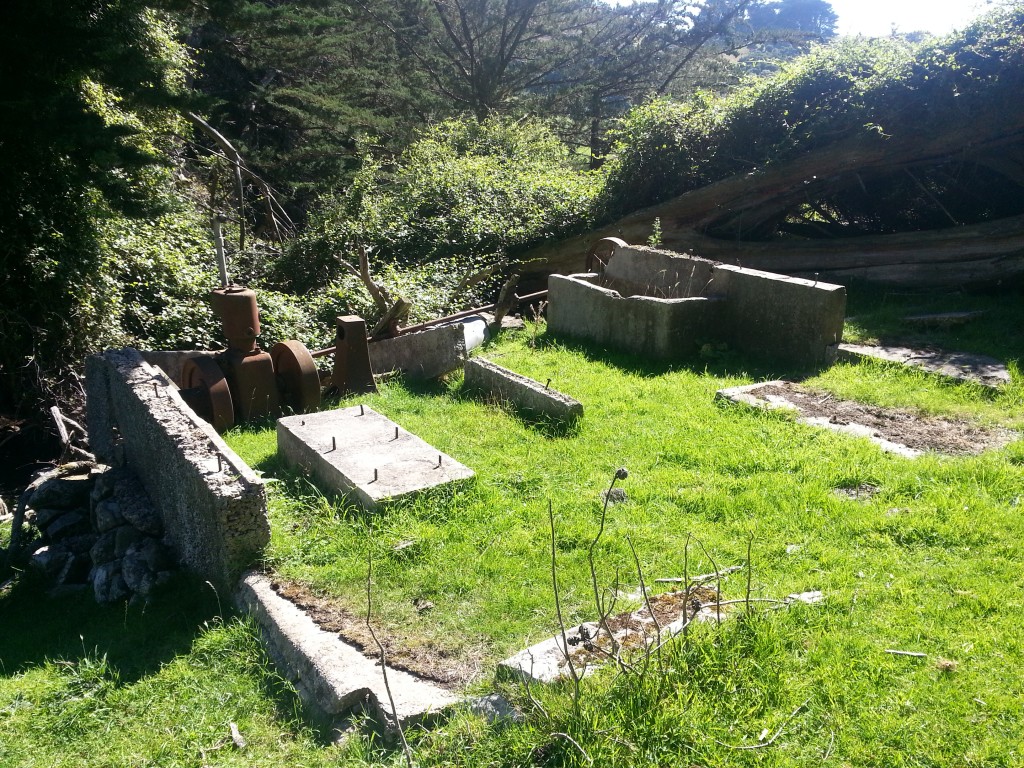
Behind the engine room is a large concrete foundation, which may have been the floor of a cattle byre.
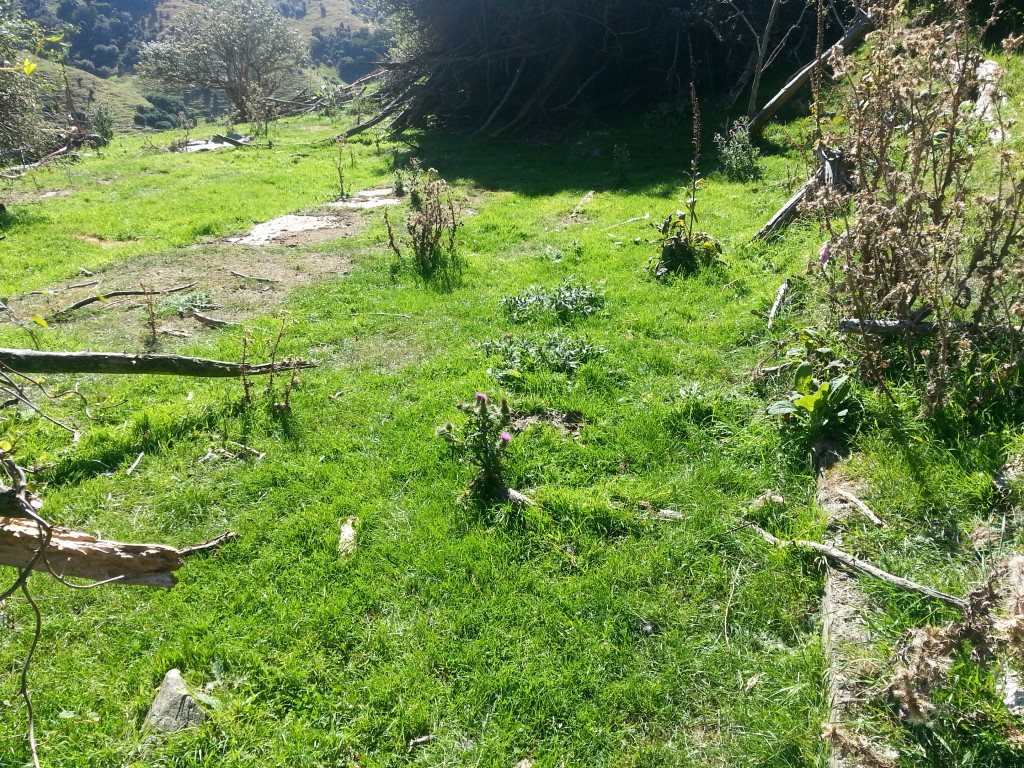
Having explored to our hearts’ content, we bade our farewells to Glenmore and began the steep trudge back out of the valley.
References:
SANDYMOUNT SCHOOL Evening Star , Issue 17473, 2 October 1920, Page 6
Sandymount School, Otago Peninsula : centennial of inauguration. Seaton, Reg.
INQUESTS. Otago Daily Times , Issue 13261, 18 April 1905, Page 3
STEWART, Robert Alexander – WW1 47093 – Army
Page 6 Advertisements Column 1 Otago Daily Times , Issue 15195, 14 July 1911, Page 6
Hints and Suggestions. Otago Witness , Issue 2820, 1 April 1908, Page 74
DEATHS. Evening Star , Issue 15539, 8 July 1914, Page 6
MARRIAGES. Otago Daily Times , Issue 16563, 10 December 1915, Page 4
DEATH. Otago Daily Times , Issue 15764, 15 May 1913, Page 6
MILITARY SERVICE BOARD Otago Daily Times , Issue 17096, 30 August 1917, Page 2
MILITARY SERVICE BOARD Evening Star , Issue 16591, 26 November 1917, Page 4
MILITARY SERVICE BOARDS Otago Daily Times , Issue 17068, 28 July 1917, Page 11
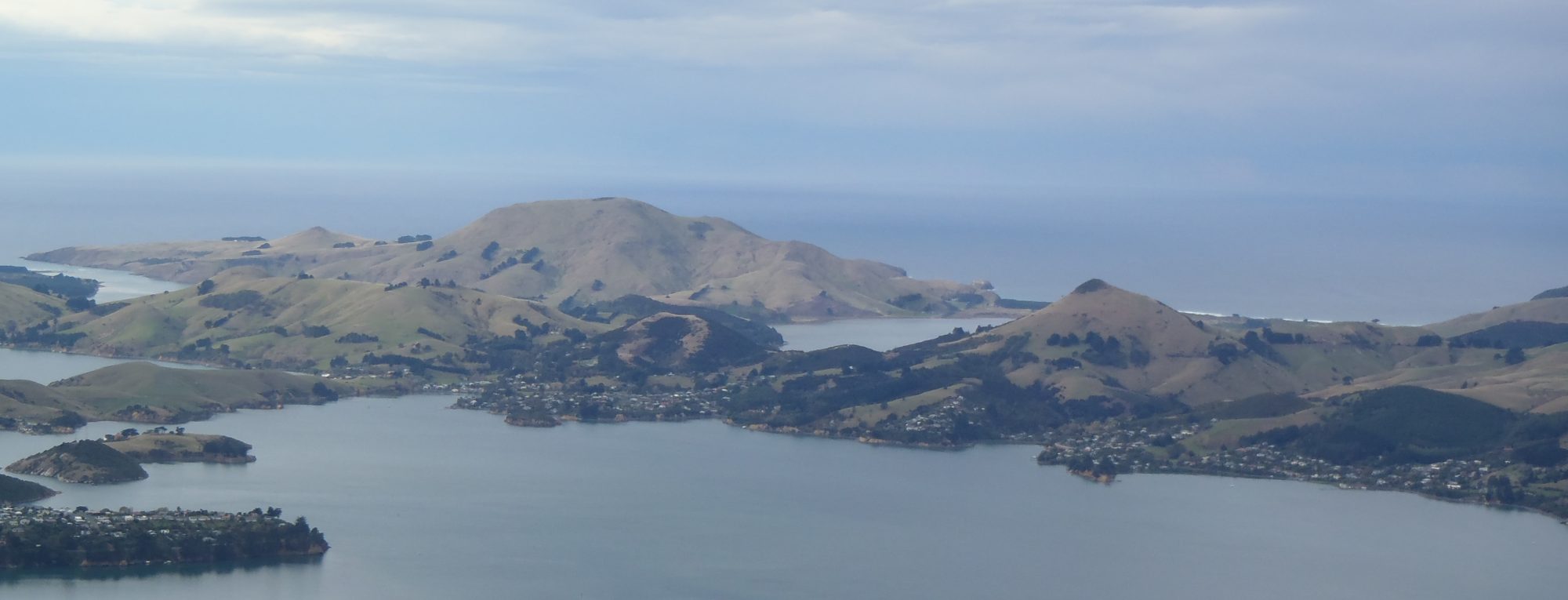

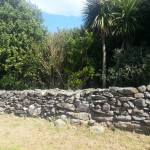

As only child of William Morton (son of William and Jessie Stewart) I found this of great interest. Having visited and wandered around the ‘old farm’ back in the days when my Uncle Ron was still farming there, it brought back many memories.
I am thoroughly convinced I am the great grand child of one of the Stewart daughters not mentioned here. Her name was Jane Stewart, born 1887, and she married Hugh Hughes. They are both buried in the same plot at Portobello Cemetery. She passed in 1955.
Hi Raewyn, yes Jane was one of the daughters I didn’t manage to mention. I hope you have good luck finding out more about her!
Hi Raewyn, I am Julie Stewart and I helped Amanda with her article. I am a great grand daughter of Robert and Marion Stewart. My grandfather was William Donald Stewart and he farmed the farm after Robert and then my father after him. In the tree there is a Jane Stewart that married Hugh Hughes, one of dad’s aunts. So, yes you would be related. I am currently doing family research and if you would like confirmation etc, please contact me on 027 345-1455. Cheers, Julie
Hi Julie,
Sorry it took me a while to see your message, but I have this page bookmarked as a source on Marion Patrick’s Wikitree page… Here: https://www.wikitree.com/wiki/Patrick-3236 I live outside of New Zealand, Julie, but you can reach me by sending me a message via Marion or any of those for the profiles of this family I have been sourcing.
I just wanted to say thank you to Amanda for posting this article, the history and the images. It’s been very helpful and possibly in more ways than you could have imagined!
And I forgot to say a huge thank you to Julie as well for all the research.
Hi Raewyn, I have just found this web site ! I am Wayne Hughes & Jane & Hugh are my grandparents.
I would be interested to know who your parents are ?
I can be contacted on sharway69@hotmail.com.
Hi there, on Facebook currently there is a person looking for an Ian Stewart originally from Mosgiel. It is on the fb page Reconnecting NZ. Might he be part of this family?
what happened to marion( Minnie)whom married John Moreland and her other child June thanks
Greetings Lorraine, I can tell you exactly what happened to (Minnie) Marion, she was my Grand mother. John Moreland apparently deserted her somewhere around 1905 , she had two children, a notice from Supreme Court in August 1911 of a citation in Divorce I have found.
She then married my Grandfather, William Allison, Married December 1911, they lived in Bay View Road, St.Kilda, Dunedin. They had a son William Donald Allison Born 30th May 1917.
Marion had two girls from the Moreland marriage, May was the eldest, and Jean. I know more details about Aunt Jean but May I am struggling to find information. I do know that she married a Littlejohn and they had a daughter known to the family as Billie, I do think that her name may have been Christine but not verified to date. However she was Dad’s Niece and I did get to know her briefly over the years.
Would love to hear of any other information regarding Marion, I do have some pictures.
Regards Joan
Hello Joan Found your message as above…. (May) Marion Stewart Morland married JD Littlejohn, divorced after few years of marriage. Marion married NB Clouston in 1941, divorced again in 1952.
Regards
Christine
Marion died on 22 June 1966 at Public hospital, Dunedin, age 66
What a find, this article has filled in so much of what I did not know, I hav been seeking information about my grandmother Marion Stewart, I have very vague memories of her as she died when I was four. She married William Allison and they had a son William Donald, my Dad. We lived in Dunedin. He had many memories of going to the Stewart farm and talked often of the adventures that he had there. I do remember the Hughes family home and going to visit as a child. This article and the photos are a absolute god send. Anyone seeking information that I can help with I would be more than happy to correspond with. Thank you to all.
Hi Joan – I have just read your comments and was wondering if you have any more info. re Robert and Marion’s family. My Grandfather was William, one of their sons and your grandmother’s brother. My father, Morton Stewart, died when I was just a few months old, so my contact with the Stewarts has been minimal. I did visit the farm at Sandymount and grandparents in Portobello as a child, but never met, or even new of, the rest of the Stewart clan. I am trying to put together a bit of a Stewart history to pass on to my own family. I am particularly interested in anything you might know about how/when Robert and Marion immigrated to N.Z. I look forward to hearing from you if you are interested in following up on my query.
The family members nostalgia is real. I enjoyed reading through this article, interesting!
Hello, I am an archaeologist doing a PhD on some of the stone masonry structures around the Hereweka/Harbour Cone and Sandymount areas.
I am particularly interested in the small lime kiln (the bottom kiln of the three) which was historically on Robert Stewarts farm, operated by the Robertson brothers (that lived nearby at Sandfly).
Does anybody know if there was more than one kiln on the Stewart farm? There is historical evidence to suggest there were multiple kilns, referenced as “Glenmore Kilns” (eg. see: Page 3 Advertisements Column 4 -EVENING STAR, ISSUE 3162, 8 APRIL 1873, PAGE 3), and this does not include the two top kilns that were on different properties.
If anybody has information, please email me on: murca684@student.otago.ac.nz
Hi Joan,
My grandparents where Hugh & Jane Hughes, you mention visiting their home on Harbour Cone. Would you have any photos of the home ? I did visit it as a young child in the late 50s, but sadly it was destroyed by fire & I have no recollection of what it looked like. I am also looking for photos of Jane, as I never met her.
Any information would be greatly appreciated.
Thanks
Hi. Can you give directions to this place please? Even if just a generalmidea. Thanks.
Hi Marcus, try entering the following into Google Maps: -45.86605394620684, 170.64322807606763
Hopefully that will give you the general location
Sorry – Of course I meant general idea!
Jane Hughes (nee Stewart) was my grandmother, I would love to visit the family home & see where she was raised.
Can anyone tell me if there is public access to the site & if so, which is the best way in. At my age, my preference would be to come up a gully as opposed to battling a steep hill.
I look forward to a response.
Thanks
Hi Wayne, lovely to hear from you. Yes, the site is public, all contained within the DCC-Owned Harbour Cone Reserve.
Last time I visited there was no official track and it was a matter of making one’s way down the slope as best one can. It might be a bit of a challenge, although I believe you can see it from the road in some places.
You could also try contacting the Trustees of the Harbour Cone trust for more guidance.
Great to see that comments on Amanda’s article are still ‘live’.
I am still struggling to find any details of Robert and Marion’s immigration. If anyone out there can help, I would be most grateful. Any little detail would be more than I have at the moment.
AMANDA – Like most of those who have commented on your article, I am trying to put together my own little Stewart story (I am son of Morton Stewart, one of William’s sons). Whatever I finish with would be for family only, and I was wondering if you would have any problem with me reproducing part or all of your article in the little booklet I have planned. The article would be suitably acknowledged of course.
Hi Robin,
Absolutely you can use what I have published here with attribution. Good luck on your journey!